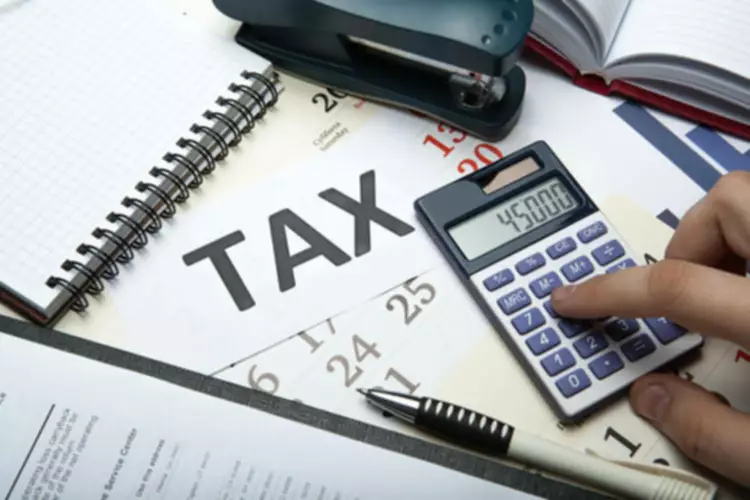Content

ERP systems have been known to deliver just this, along with so much more. Before getting started on the ERP, your employees will require a thorough understanding of the system and its functionalities. For this, you can design a week-long training program that guides the users through the software and explains all of its components. Your organization must have collected heaps of data prior to implementation of ERP. For this, you may need to tweak and rearrange your data and prime it for migration into the new software.
Is SQL an ERP system?
For example, SQL server or a tool like MYSQL workbench is a DBMS. A DBMS is mainly used by or designed for technical people. ERP (Enterprise Resource Planning System) is a complete system with one database and number of function modules and has a number of inputs and output interfaces to be used by everyone.
Data migration to an ERP system is challenging in the implementation process that required complete preparation and proper planning. There is always a risk of data loss when you are consolidating or standardizing data from different apps. A software of such great importance across the company can not be implemented without keeping all the stakeholders constantly. The team should consist of senior representatives from all the departments and they should be in unison about the actions as well as the goals.
Who Should Install an ERP System?
While putting together a team for ERP implementation, make sure you select the right candidates for each role. Keep in mind that this is perhaps the most important project for your company’s survival and growth, and create a team of your best henchmen. https://www.bookstime.com/ Sure, the crew does most of the work but to no avail if the captain steers the ship into an iceberg. Make sure that the ERP team is led by a project manager who is not just skilled, but also level headed and committed to the project.
MRP remained the manufacturing standard until manufacturing resource planning (called MRP II) was developed in 1983. MRP II featured “modules” as a key software architectural component, and integrated core manufacturing components including purchasing, bills of materials, scheduling, and contract management. For the first time, different manufacturing tasks were integrated into a common system. By 1990, technology analysts had a name for this new category of business management software—enterprise resource planning. An ERP software system is a set of integrated applications or modules for managing a company’s core business processes – including finance and accounting, supply chain, HR, procurement, sales, inventory management, and more.
things to look for in an ERP system
It helps manage the daily routine work like accounts, payroll administration, more effortless with just a click on the button. However, AI now has wider scope and implications for the manufacturing industry and, more specifically, ERPs as well. AI technology is built directly into the ERP systems from which you can learn and then assist them in automating routine processes and building enhanced user experience. To have up-to-date information about your business instantly is the need of the hour. Every business needs a system that helps in streamlined flow of business data and easy information access for all organization departments.
In other blogs, we cover the pros and cons of on-prem vs cloud deployment strategies. At this same level, capacity requirements planning tie the production plan to resource availability—which provides visibility for work center capacity and loading. Integrating ERP with SCM, companies can automate many of their SCM activities. Automation helps them reduce human errors and also frees up a lot of human resources that can be deployed elsewhere.
What Is ERP (Enterprise Resource Planning)?
ERP modules are integrated into one complete system and share a common database to streamline processes and information across the enterprise. ERP is an acronym for enterprise resource planning, and it refers to an integrated software package that supports all of a company’s functional areas. Thus, it can handle the transactional requirements of the accounting, customer service, manufacturing, sales, warehousing, and other departments, using a single user interface. Many ERP systems also accept data from a company’s customers and suppliers for supply chain management purposes, so that the system essentially exceeds the traditional boundaries of a corporation.
- At first glance, the logistics functionalities of an ERP may seem to overlap with the ones offered by a warehouse management system.
- Direct integration—ERP systems have connectivity (communications to plant floor equipment) as part of their product offering.
- Your ERP solution must be built on a single, comprehensive database management system.
- Allocation – Reserving materials for a specific customer order or work order.
- Other methods for ERP integration include ESB (enterprise service bus) and iPaaS (integration platform-as-a-service).
An ERP solution is used to unify coordination of all processes, automate workflow management, expedite data flow within the organization through gated access and reduce work reporting to bare minimum levels. It gives the user a comprehensive overview of the operations and ensures that all stakeholders of the organization work in close coordination with each other to achieve common goals and objectives in a timely manner. An ERP system can take orders from customers, manage financial records, update inventory after each sale, and anticipate labor needs based on the level of orders received. In addition to managing processes, ERP systems also gather, store, and analyze data from internal functions, such as product marketing, manufacturing, accounting, facilities, and research and development. The first ERP systems sold in the 1970s through the 1990s all ran “on premises” on the company’s computers. Nowadays, ERP is just as likely to run in the cloud on systems maintained by the vendor or a service provider, and users access the software over the internet from their desktop or mobile devices.
Scarcity of resources
Microsoft (MSFT) has long been an industry leader, with many customers using multiple software applications from the company. You can think of an enterprise resource planning system as the glue that binds together the different computer systems for a large organization. Without an ERP application, each department would have its system optimized for its specific tasks. With ERP software, each department still has its system, but all of the systems can be accessed through one application with one interface. Large companies with global or subsidiary operations need a robust, market-leading ERP system with embedded AI, machine learning, and analytics – and intelligent automation to transform business models and processes.

When payment arrives, the user enters the payment in the general ledger or in a cash-management module, and the revenue is recorded and reconciled with the company’s bank account. Custom–integration solutions—Many system integrators offer custom solutions. These systems tend to have the highest level of initial integration cost, and can have a higher long term maintenance and reliability costs. Long term costs can be minimized through careful system testing and thorough documentation.
Also, they can handle all the daily activities of the people effortlessly who are using the system. Providing proper training to your employees about using the software will help them satisfy users and acquire huge ROI from the tool. The other name of enterprise resource planning is efficiency and productivity.
- It ensures that enough materials are available for production, enough finished products are available to deliver to customers, and that the lowest amount of materials and products needed are on hand.
- It is a process used by many companies to manage and integrate important aspects of a business such as accounting, project management, supply chain management operations, etc.
- Once you’ve selected an ERP system, work with your vendor to create a comprehensive plan for implementation.
- Without an ERP application, each department would have its system optimized for its specific tasks.
- Accounts Payable – All unpaid balances that your company owes to its vendors.
- Cloud ERP, on the other hand, delivers ERP software via the internet - meaning that the provider takes care of hosting, maintenance, security, and upgrade issues.
They can automate processes that used to require heavy manual intervention, such as reconciling financial accounts. In addition, users gain a comprehensive, real-time understanding of enterprise business activities not only in the front office, but also in warehouses, on factory floors, and everywhere else across the enterprise. This knowledge is then readily available to every appropriate employee on their mobile devices, including smartphones and tablets. How can these solutions manage organizations day-to-day business activities, such as accounting, finance, procurement, project management, supply chain, and manufacturing. Enterprise resource planning software offers single-system solutions that integrate processes across the business. These applications allow users to interact within a single interface, share information, and enable cross-functional collaboration.
Evolve your financial systems
Every business owner keeps a strict eye on their finance area and tries to avoid making any mistake that will cost them high and wreck their business. You have to be very smart with your spendings and should know every detail of it. The architecture is thus distributed between the two infrastructures, but the users can control and manage the Hybrid ERP centrally. The trouble amplifies when a business operates from multiple locations and ultimately leads to a situation where there is little to no visibility of how the operations are being carried out.
Is CRM an ERP?
No. While ERP and CRM share common benefits, they are not interchangeable. What is the difference between CRM and ERP? CRM supports front-office functions, such as sales, service, and marketing, and ERP supports back-office functions, such as accounting, operations, and HR.
Next-generation technologies, like artificial intelligence (AI), help cloud-based systems rapidly improve their capabilities with no need for periodic updates, unlike your legacy system. Now, with no additional or new input from the end-user, ERP systems continually become significantly easier to manage and use. Then, the hosting company loads the applications onto the server the client is renting, and both parties begin working to integrate the client’s processes and data into the platform. The cloud provides an ideal environment for ERP as it is an accessible, reliable, secure, and highly scalable platform for mission-critical software. True cloud ERP software is developed specifically for cloud deployment and takes full advantage of the cloud environment. Once you’ve selected an ERP system, work with your vendor to create a comprehensive plan for implementation.
ERP systems can be deployed on premise, in the cloud, or in a hybrid scenario depending on business need. They can integrate with existing databases or, ideally, run on newer, powerful in-memory databases. It is possible to offer services like this because of the economy of scale that the provider accesses. When one provider delivers the same service to many businesses, they erp defined can spread the cost of development, support, and infrastructure over all their customers. An ERP system can include software for manufacturing, order entry, accounts receivable and payable, general ledger, purchasing, warehousing, transportation and human resources. The major ERP vendors are SAP, Oracle (PeopleSoft and J.D. Edwards), SSA Global (Baan) and Microsoft.